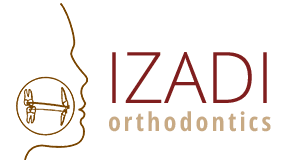Picture this: you spent several of your teenage years wearing braces to get a perfect smile. You went to all of your orthodontic appointments and thoroughly cared for your teeth. You started the next chapter of your life with a new and improved smile.
However, you recently noticed that your teeth aren’t as straight as they once were. In fact, your teeth are becoming crooked once again. This is called an orthodontic relapse. Simply, it means that your teeth are beginning to shift after your orthodontic treatment. Typically, this happens over a longer period of time, which means you probably won’t notice it at first.
When Will You Notice It?
You may first notice the change in your teeth while looking in the mirror or looking at photos of yourself. However, it may take visually comparing your teeth to see the change. Another way you might feel an orthodontic relapse is by noticing a change when you clean your teeth.
For example, you might have a harder time flossing or brushing your teeth. In fact, it can begin to affect your oral health. Not being able to remove plaque efficiently can discolor your teeth. Additionally, it can increase your chances of developing tooth decay or gum disease.
If you run your tongue over your teeth at all, you might physically feel a change in your teeth. For example, rather than your teeth being in a smooth line, you may feel the edge of a tooth that is turning out of place.
In addition, you may feel a change in the way you chew your food. The alignment of your teeth is important for eating, so if your teeth shift, it can become painful or more difficult.
What Causes Orthodontic Relapse?
There are several things that may cause an orthodontic relapse.
Generally, once you finish orthodontic treatment, your orthodontist will create a retainer that you must wear. It is vital that you wear the retainer as your dentist suggests. Otherwise, your teeth can move out of alignment. Because your teeth are already shifting, it is likely that they will continue to shift. This is why you need to wear your retainer. It will keep your teeth in place.
Sometimes, your teeth can just shift due to age. As we get older, our faces naturally change. It is not just our skin that changes. In fact, our facial structures change, which can cause our teeth to move.
Finally, a missing tooth can change the alignment of your teeth. This is because your teeth depend on the pressure of each other to stay where they are. When one tooth goes missing, the balance is gone. Therefore, your teeth will shift in an attempt to achieve balance once again. Unfortunately, this means that your teeth will move out of alignment.
In addition, losing one tooth can mean future dental problems. If you don’t get a replacement for your tooth, it means that your remaining teeth can loosen and fall out as well.
